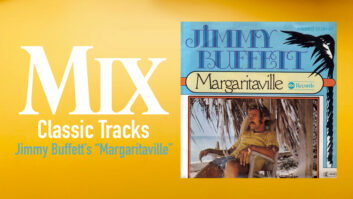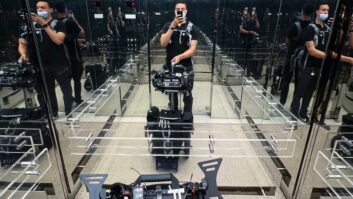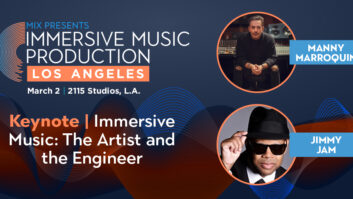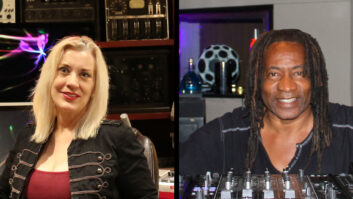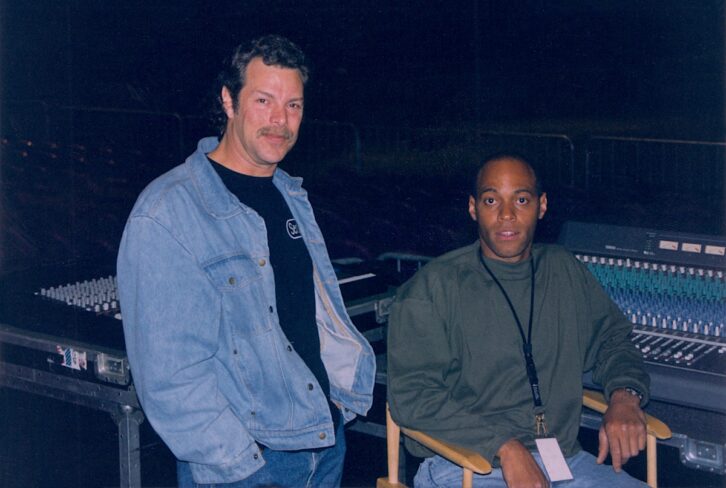
This article originally appeared in the April 1998 issue of Pro Sound News.
New York, NY (February, 1998)—In the middle of another gray, rain-soaked New York City winter, the thought of Jimmy Buffett playing his happy odes to warmer climes seemed almost absurd. But the Parrotheads that turned up at Madison Square Garden to see Buffett in mid-February knew that it made perfect sense—if anything, they left the crud of the city for a one-night vacation in Buffett’s corner of the world, where all that matters are booze, boats, a beach and a breeze.
Helping make that trip to Margaritaville as painless as possible, FOH engineer/Crew Chief Rich Davis presided over a Yamaha PM4000 console from his canvas director’s chair, where he mixed Buffett’s 14-piece Coral Reefer Band. As it has since 1975, Sound Image provided Buffett’s audio production, but handling the large group in a booming arena wasn’t all smooth sailing, however, as Davis explained: “There are shows where you have to take certain instruments out, because if you get three different instruments playing the same part, it just adds to the problem of the room. Sometimes I have to pick and choose what goes in, what sticks out, what goes away.”
VITAL STATS: Jimmy Buffett • Sound Image |
| FOH Engineer/Crew Chief: Richard Davis
Monitor Engineer: Rob Delson Assistant Engineer: John Tompkins Technican: Ralph Sordyl System Engineer: Gary Hartung |
| FOH Console: Yamaha PM4000
Monitor Console: Ramsa SX-1 House Speakers: Sound Image Series G-5 carbon enclosures Monitor Speakers: Sound Image Series 2×15 In-Ear Monitors: Future Sonics Ear Monitors with Garwood Radio Station receivers House Amplifiers: QSC PowerLight 1.8, 4.0 Monitor Amplifiers: QSC PowerLight 1.8, 4.0 FOH Equipment: Lexicon 300; AMS DMX16; Yamaha Pro R3; Eventide H3000; ADL 1500; (12) JBL 7110; BSS gates Monitor Equipment: (16) Klark-Teknik DN3600; Yamaha SPX1000 Microphones: Audix; AKG; Shure; Sennheiser; Samson Synth-6 system |
Indeed, some things stuck out whether he wanted them to or not, such as the bass guitar. “The bass has been the biggest fight out here in terms of consistency,” he said. “I’m not sure if it’s a case where the bassist can’t hear up there or maybe he gets excited during the show and plays harder, but that bass can be difficult. I’ve been using an Anthony DiMaria tube compressor—it squashes it, but you don’t hear it squash. I use one channel on the bass and the other channel for Jimmy’s vocal.”
Another prominent instrument in the mix are the steel drums. “You get the spikes sometimes and it can be hard to get rid of the reverb from their natural sound. I think steel drums sound better from the top side, but I can’t get microphones in the position I want and let him play comfortably, so I put an AKG 414 underneath each drum. We also have the AKG 401 clip-on contact mics on the side of the drum, and they are used in the monitors because the 414s pick up too much room in the monitors. Then we have a Yamaha ProMix01 digital mixer up on stage that takes all three mics, mixes them and sends me a microphone feed. I mix the pickups to one side of it, and I send that back here, so I have the mics or the pickups depending on what I need, and then I compress both of those to squash some of the peaks that you get from the drum, and just smooth it out a little bit.”
On-hand for the three-week tour were a batch of Sound Image’s carbon fiber loudspeaker enclosures. All but one show was performed in the round, requiring more boxes than the typical tour—but the light boxes helped keep the amounts of weight and sweat down. “The truck loaders love the carbon boxes because they’re half the weight of the old wooden ones,” said Davis. “Then the riggers love them because they don’t have to fight points. They can hang three motors off the same beam if they have to; these boxes can go 10 deep from one-ton motors.”
As a testament to the boxes’ loudness, Buffett had switch to in-ear monitors for a few songs. At one point during each show, he would go into the stands and do a few songs on his acoustic guitar. The first night of the tour, the crew placed a few wedges facing out from the stage towards Buffett, but they had no hope of reaching him through the crowds and the main PA’s output. Accordingly, Buffett was outfitted with Future Sonics ear monitors, a Garwood Radio Station transmitter and a Shure WT10 headset mic. The rest of the acoustic performances were flawless.
Classic Tracks: Jimmy Buffett’s “Margaritaville”
A number of wedges on stage were carbon fiber, too; monitor engineer Bob Delson used a Ramsa SX-1 console to provide 18 mixes. Interestingly, there were no effects used in the monitor mixes, other than some gates on the drums.
Filling out the complement of carbon fiber loudspeakers were a few boxes that were used just for a musical lark called Club Trini, as Davis explained: “We have a golf cart that pulls a little trailer—it’s called Club Trini—and part of the band goes up into the lobby, and they play some songs out there as people come into the arena. It’s great—it gets people in the mood before they even get into the show!”
